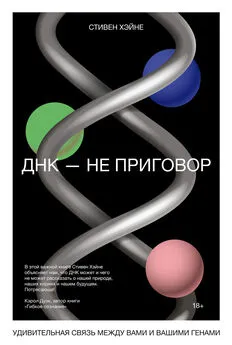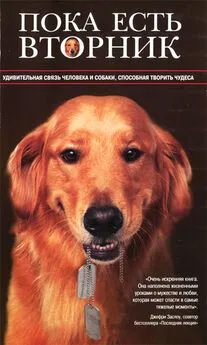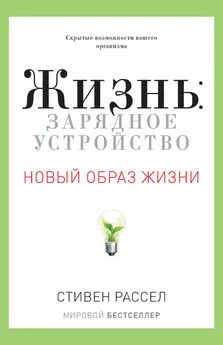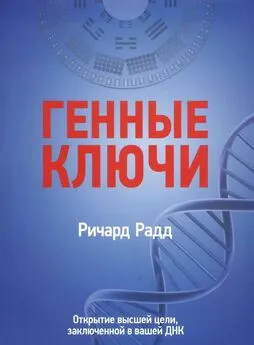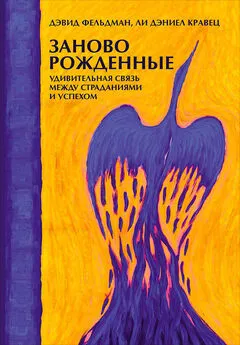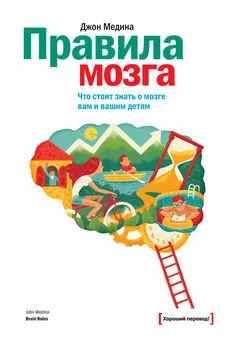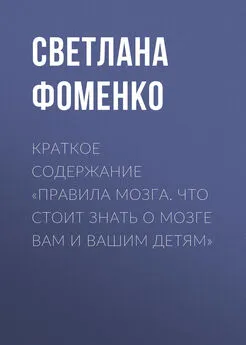Стивен Хэйне - ДНК – не приговор. Удивительная связь между вами и вашими генами
- Название:ДНК – не приговор. Удивительная связь между вами и вашими генами
- Автор:
- Жанр:
- Издательство:Литагент МИФ без БК
- Год:2019
- Город:Москва
- ISBN:978-5-00146-004-6
- Рейтинг:
- Избранное:Добавить в избранное
-
Отзывы:
-
Ваша оценка:
Стивен Хэйне - ДНК – не приговор. Удивительная связь между вами и вашими генами краткое содержание
ДНК – не приговор. Удивительная связь между вами и вашими генами - читать онлайн бесплатно ознакомительный отрывок
Интервал:
Закладка:
255
Royal, C. D., Novembre, J., Fullerton, S. M., Goldstein, D. B., Long, J. C., Bamshad, M. J., & Clark, A. G. (2010). Inferring genetic ancestry: Opportunities, challenges, and implications. The American Journal of Human Genetics , 86, 661–673.
256
Petrone, J. (13.01.2015). Consumer genomics market should pass «tipping point» of 3 million samples tested in 2015 ( https://www.genomeweb.com/microarrays-multiplexing/consumer-genomics-market-should-pass-tipping-point-3-million-samples-tested).
257
Вычисление скорости генетических мутаций является ключевым для точной оценки дат миграции (Scally, A., & Durbin, R. (2012). Revising the human mutation rate: Implications for understanding human evolution. Nature Reviews Genetics , 13, 745–753).
258
См.: Mellars, P., Gori, K. C., Carr, M., Soares, P. A., & Richards, M. B. (2013). Genetic and archaeological perspectives on the initial modern human colonization of Southern Asia. Proceedings of the National Academy of Sciences , 110, 10699–10704.
259
Подробный обзор миграций первых людей см.: Bellwood, P. (2014). First migrants: Ancient migration in global perspective . West Sussex, UK: Wiley.
260
Доказательствами такой структуры миграции людей служат также различия между языковыми семьями и распределение их в мире. См.: Cavalli-Sforza, L. L. (2000). Genes, people, and languages . New York, NY: Farrar Straus & Giroux.
261
Ingman, M., Kaessmann, H., Paabo, S., & Gyllensten, U. (2000). Mitochondrial genome variation and the origin of modern humans. Nature , 408, 708–713.
262
Underhill, P. A., Shen, P., Lin, A. A., Jin, L., Passarino, G., Yang, W. H., et al. (2000). Y chromosome sequence variation and the history of human populations. Nature Genetics , 26, 358–361. Более поздние анализы показывают, что Y-хромосомному Адаму может быть 156 тыс. лет (Poznik, G. D., Henn, B. M., Yee, M. C., Sliwerska, E., Euskirchen. G. M., Lin, A. A., et al. (2013). Sequencing Y chromosomes resolves discrepancy in time to common ancestor of males versus females. Science , 341, 562–565).
263
Причина, по которой наш общий предок по отцовской линии находится ближе к нам, чем по материнской, заключается в большем разбросе в количестве детей среди мужчин. У некоторых представителей сильного пола рождаются сотни сыновей и дочерей, в то время как большинство женщин, как правило, имеют примерно одинаковое число детей. Следовательно, нам не нужно далеко ходить, чтобы найти общего предка по отцовской линии.
264
Bellis, C., Hughes, R. M., Begley, K. N., Quinlan, S., Lea, R. A., Heath, S. C., et al. (2005). Phenotypical characterisation of the isolated Norfolk Island population focusing on epidemiological indicators of cardiovascular disease. Human Heredity , 60, 211–219.
265
Chiao, J. Y., & Blizinsky, K. D. (2010). Culture – gene coevolution of individualism – collectivism and the serotonin transporter gene. Proceedings of the Royal Society B , 277, 529–537.
266
Novembre, J., Johnson, T., Bryc, K., Kutalik, Z., Boyko, A. R., Auton, A., et al. (2008). Genes mirror geography within Europe. Nature , 456, 98–101.
267
См. Elhaik, E., Tatarinova, T., Chebotarev, D., Piras, I. S., Maria Calò, C., De Montis, A., et al. (2014). Geographic population structure analysis of worldwide human populations infers their biogeographical origins. Nature Communications , 5, 3513. doi: 10.1038/ncomms4513.
268
Оценка фактической процентной доли каждого из наших предков несколько затруднена, поскольку мы наследуем ДНК от родителей частями посредством мейоза. Из-за этого некоторые наши далекие предки не оставили следов своей ДНК в нашем геноме (Royal, C. D., Novembre, J., Fullerton, S. M., Goldstein, D. B., Long, J. C., Bamshad, M. J., et al. (2010). Inferring genetic ancestry: Opportunities, challenges, and implications. The American Journal of Human Genetics , 86, 661–673).
269
Проводится ежегодно в феврале в США и Канаде. Прим. ред.
270
Детальное исследование опыта генетического тестирования афроамериканцев см.: Nelson, A. (2008). Bio science: Genetic ancestry testing and the pursuit of African ancestry. Social Studies of Science , 38, 759–783.
271
Nelson, A. (2008). Genetic genealogy testing and the pursuit of African ancestry. Social Studies of Science , 38, 759–783.
272
Здесь и далее цит. по: https://chancellorfiles.wordpress.com/2008/02/27/wayne-joseph-thought-he-was-black.
273
Любопытно, что у нашей семьи была другая версия истории моей бабушки по материнской линии. Но через 23andMe со мной связался человек, которого компания определила в качестве моего четверо- или пятиюродного брата из-за наших общих генов. Он рассказал мне более правильную историю моей бабушки по матери.
274
Гаплогруппа – это группа людей, разделяющих гаплотип.
275
Данные об изменении населения Земли с течением времени см.: http://themasites.pbl.nl/tridion/en/themasites/hyde/basicdrivingfactors/population/index-2.html.
276
Больше информации о браках между родственниками см.: Bittles, A. H. (2001). Consanguinity and its relevance to clinical genetics. Clinical Genetics , 60, 89–98.
277
См.: http://cnsnews.com/news/article/obama-distant-cousins-palin-limbaugh-bushand http://query.nytimes.com/gst/fullpage.html?res=9900E4D61131F935A15750C0A96E9C8B63&ref=amyharmon.
278
Ralph, P., & Coop, G. (2013). The geography of recent genetic ancestry across Europe. PLoS Biology , 11 (5), e1001555. doi: 10.1371/journal.pbio.1001555.
279
Rohde, D. L. T., Olson, S., & Chang, J. T. (2004). Modeling the recent common ancestry of all living humans. Nature , 431, 562–566.
280
Olson, S. (2002). Mapping human history . New York, NY: Houghton Mifflin.
281
Доводы о детях Иисуса см.: Baigent, M., Leigh, R., & Lincoln, H. (2004). Holy blood, holy grail . New York, NY: Dell.
282
См.: Olson, S. (15.03.2006). Why we’re all Jesus’s children. Slate ( http://www.slate.com/articles/health_and_science/science/2006/03/why_were_all_jesus_children.html).
283
Schutzenberger, A. A. (1998). The ancestor syndrome: Transgenerational psychotherapy and the hidden links in the family tree . London: Routledge.
284
Roth, W. D., & Lyon, K. (2016). Genetic ancestry tests and race: Who takes them, why, and how do they affect racial identities? In K. Suzuki & D. von Vacano (Eds.), Reconsidering Race: Cross-Disciplinary and Interdisciplinary Approaches . New York: Oxford University Press.
285
http://www.raceandhistory.com/cgi-bin/forum/webbbs_config.pl?md=read;id=1400/.
286
Yang, A. (2007). Is Oprah Zulu? Sampling and seeming certainty in DNA ancestry testing. Chance , 20, 32–39.
287
http://www.slaverysite.com/Body/genealogy.htm.
288
The American Society of Human Genetics (13.11.2008). Ancestry testing statement ( http://www.ashg.org/pdf/ashgancestrytestingstatement_final.pdf); Bolnick, D. A., Fullwiley, D., Duster, T., Cooper, R. S., Fujimura, J. H., Kahn, J., et al. (2007). The science and business of genetic ancestry testing. Science, 318, 399–400; Lee, S. S., Bolnick, D. A., Duster, T., Ossorio, P., & Tallbear, K. (2009). The illusive gold standard in genetic ancestry testing. Science , 325, 38–39; Lindee, S. (2013). Map your own genes! In S. Krimsky & J. Gruber (Eds.), Genetic explanations: Sense and nonsense (p. 186–200). Cambridge, MA: Harvard University Press; Royal, C. D., Novembre, J., Fullerton, S. M., Goldstein, D. B., Long, J. C., Bamshad, M. J., & Clark, A. G. (2010). Inferring genetic ancestry: Opportunities, challenges, and implications. The American Journal of Human Genetics , 86, 661–673; Richards, M. (14.02.2003). Beware the gene genies, Guardian ( https://www.theguardian.com/education/2003/feb/21/highereducation.uk).
289
См.: Koerner, B. I. (2005, Sep.). Blood feud. Wired Magazine ( http://archive.wired.com/wired/archive/13.09/seminoles.html).
290
См.: Harmon, A. (12.04.2006). Seeking ancestry in DNA ties uncovered by tests. New York Times ( http://www.nytimes.com/2006/04/12/us/12genes.html).
291
Travis, J. (29.09.2009). Scientists decry «flawed» and «horrifying» national tests. Science Insider ( http://news.sciencemag.org/2009/09/scientists-decry-flawed-and-horrifying-nationality-tests); Hill, R., & Henderson, M. (17.06.2011). DNA test for bogus refugees scrapped as expensive flop. The Times ( http://www.thetimes.co.uk/tto/news/uk/article3064981.ece).
292
Gil-White, F. J. (2001). Are ethnic groups biological «species» to the human brain? Essentialism in our cognition of some social categories . Current Anthropology , 42, 515–554; Rothbart, M., & Taylor, M. (1992). Category labels and social reality: Do we view social categories as natural kinds? In G. R. S. Semin & K. Fiedler (Eds.), Language, interaction and social cognition (p. 11–36). Newbury Park, CA: Sage.
293
Keller, J. (2005). In genes we trust: The biological component of psychological essentialism and its relationship to mechanisms of motivated social cognition. Journal of Personality and Social Psychology , 88, 686–702.
Читать дальшеИнтервал:
Закладка:
